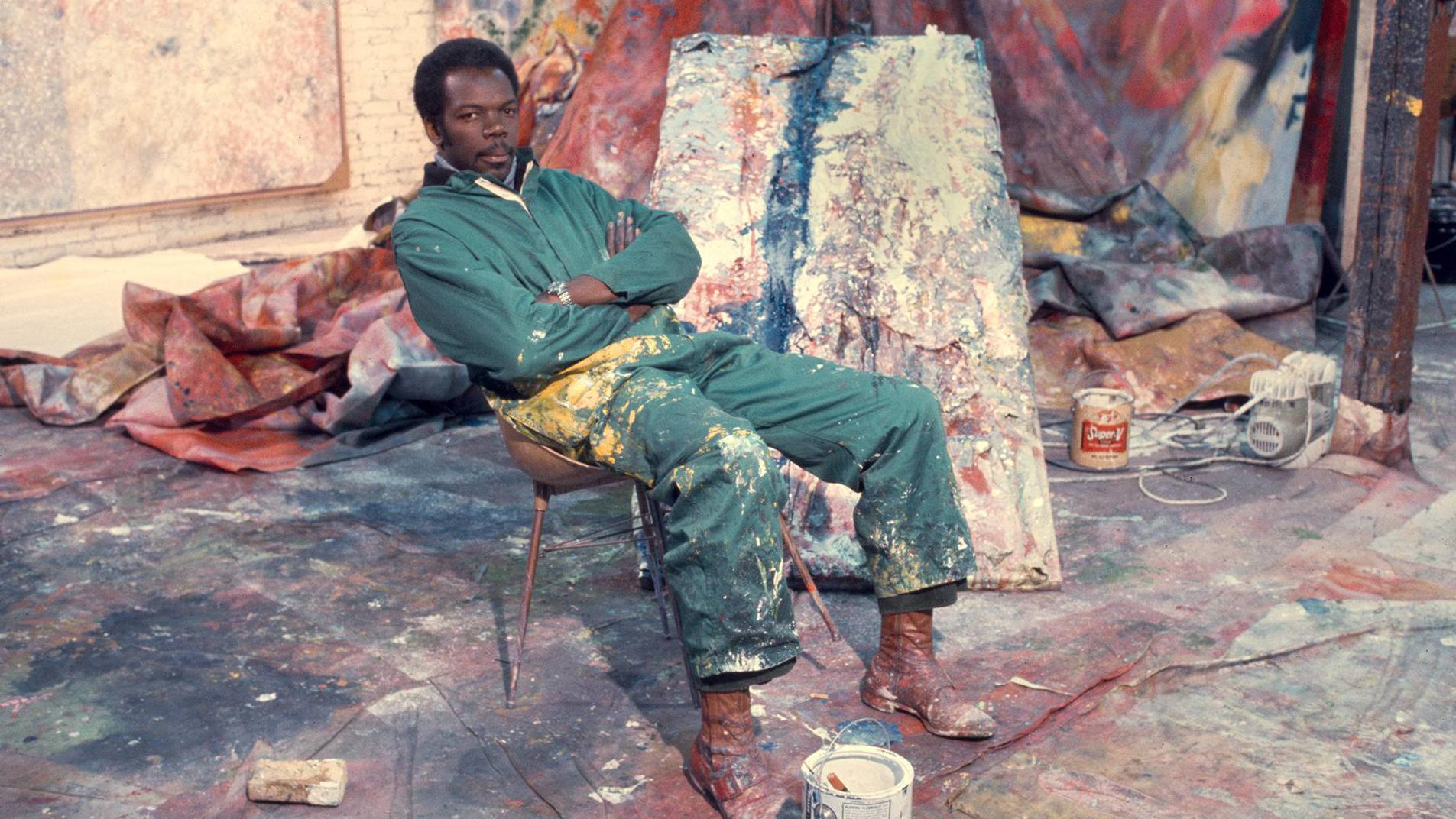Lifestyle
Sam Gilliam’s Impact Celebrated in New Dublin Exhibition

A new exhibition at the Irish Museum of Modern Art (IMMA) in Dublin highlights the lasting influence of American artist Sam Gilliam. Titled Sewing Fields, the exhibition showcases how his visits to Ireland shaped his artistic output, particularly during a transformative residency in County Mayo in 1993.
Gilliam, who passed away in June 2022 at the age of 88, was renowned for revolutionizing gallery displays. He draped unstretched canvases from ceilings and arranged industrial fabric on floors, effectively merging painting and sculpture. His work played a crucial role in the emergence of installation art during the 1960s and 1970s. Gilliam made history as the first African American artist to represent the United States at the Venice Biennale in 1972, and his legacy includes numerous public commissions and exhibitions across the United States.
The Sewing Fields exhibition, curated by Mary Cremin and Seán Kissane, features works that reflect Gilliam’s Irish experience. Cremin recounted a meeting with Gilliam’s widow, Annie Gawlak, who shared insights about his time at the Ballinglen Art Foundation. “Gilliam completed a three-week residency at Ballinglen in 1993,” Cremin said. “He was unable to bring his usual petroleum paints, so he created fabric pieces that were collaged together with a local seamstress.” One notable work from this period is a piece entitled Cottages, part of a series that is featured in the exhibition.
Founded in the early 1990s by Margo Dolan and the late Peter Maxwell, the Ballinglen Art Foundation has supported many international artists through residencies and outreach programs. “It’s a remarkable place in the village that has hosted artists like Howardena Pindell and Jo Baer,” noted Cremin. “Ireland has had a profound impact on these artists, resonating deeply in their art-making.”
Cremin also discovered that Gilliam had previously exhibited in Dublin in the early 1970s with gallerist Oliver Dowling. “Dowling was a significant figure in the Irish art scene, and it was surprising to learn that Gilliam had shown in Ireland,” she remarked. While it remains unclear if Gilliam attended the exhibition opening, the event marked an important moment in his career.
Born in Tupelo, Mississippi, in 1933, Gilliam’s early life was influenced by the local cotton industry, where quilting traditions shaped his artistic vision. Cremin pointed out that an exhibition of quilts from Gee’s Bend is currently on display at IMMA, highlighting the connection between stitching and storytelling in Gilliam’s work.
Gilliam later studied art at the University of Louisville in Kentucky and eventually settled in Washington, D.C. He became associated with the color field movement alongside artists like Kenneth Noland. Over time, his art evolved to incorporate more three-dimensional and sculptural elements, employing improvisational techniques akin to jazz music. “Improvisation was essential to his process,” Cremin explained, noting that Gilliam embraced freedom in his use of paint and canvas.
The Civil Rights Movement also shaped Gilliam’s career. While he did not create overtly political art, he partook in significant cultural initiatives, such as the establishment of the Studio Museum in Harlem. His works often reference important figures in Black history, with titles that speak to African American cultural narratives. One piece in the exhibition, Count On Us, celebrates the election of Barack Obama as a moment of inspiration.
“This is not only Gilliam’s first exhibition in Ireland since the 1970s, but it is also his first museum show here,” Cremin emphasized. “Many of these works have never been seen publicly, creating excitement among visitors, including those traveling from America.”
Gilliam’s brief stay in Ireland left a lasting mark on his artistic practice. Cremin concluded, “Even towards the end of his life, he referenced his time in Ireland in his large-scale paintings. The landscapes of County Mayo were significant to him, as Annie recalls.” The Sewing Fields exhibition thus serves as a tribute to Gilliam’s enduring legacy and the profound impact of his Irish experience.
-

 Top Stories3 months ago
Top Stories3 months agoTributes Surge for 9-Year-Old Leon Briody After Cancer Battle
-

 Entertainment4 months ago
Entertainment4 months agoAimee Osbourne Joins Family for Emotional Tribute to Ozzy
-

 Politics4 months ago
Politics4 months agoDanny Healy-Rae Considers Complaint After Altercation with Garda
-

 Top Stories4 months ago
Top Stories4 months agoIreland Enjoys Summer Heat as Hurricane Erin Approaches Atlantic
-

 World5 months ago
World5 months agoHawaii Commemorates 80 Years Since Hiroshima Bombing with Ceremony
-

 Top Stories3 months ago
Top Stories3 months agoNewcastle West Woman Patricia Foley Found Safe After Urgent Search
-

 Top Stories5 months ago
Top Stories5 months agoFianna Fáil TDs Urgently Consider Maire Geoghegan-Quinn for Presidency
-

 World5 months ago
World5 months agoCouple Convicted of Murdering Two-Year-Old Grandson in Wales
-

 World5 months ago
World5 months agoGaza Aid Distribution Tragedy: 20 Killed Amid Ongoing Violence
-

 World5 months ago
World5 months agoAristocrat Constance Marten and Partner Convicted of Infant Murder
-

 Top Stories4 months ago
Top Stories4 months agoClimbing Errigal: A Must-Do Summer Adventure in Donegal
-

 Top Stories4 months ago
Top Stories4 months agoHike Donegal’s Errigal Mountain NOW for Unforgettable Summer Views









